Answered step by step
Verified Expert Solution
Question
1 Approved Answer
What amount does the company report for inventory at the end of the most recent year? Required: 1. What is the title used by Target
What amount does the company report for inventory at the end of the most recent year?
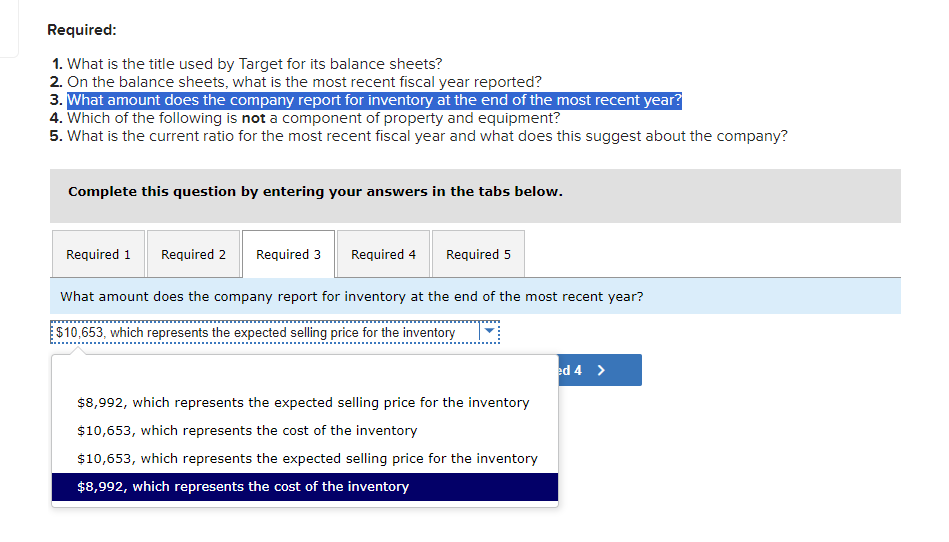
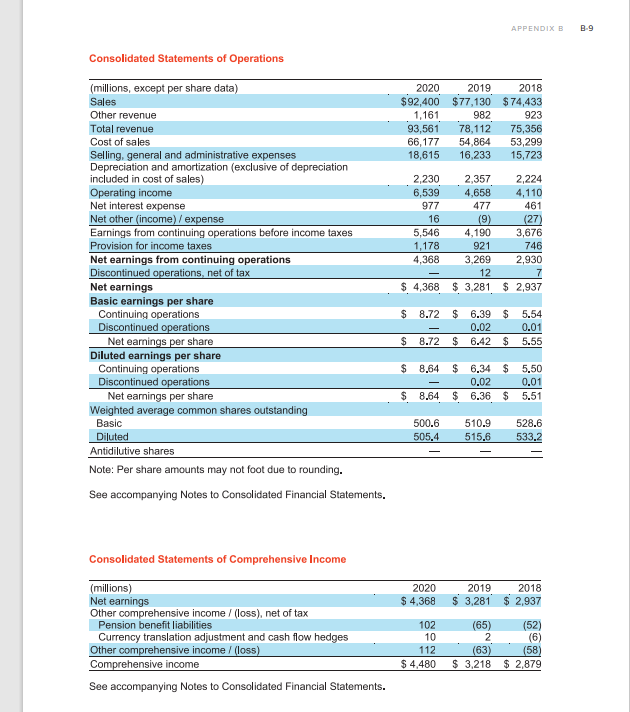
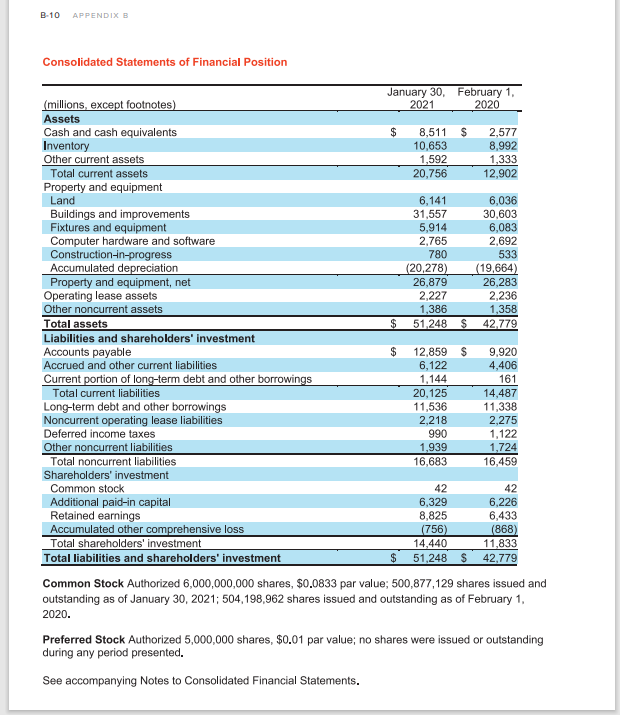
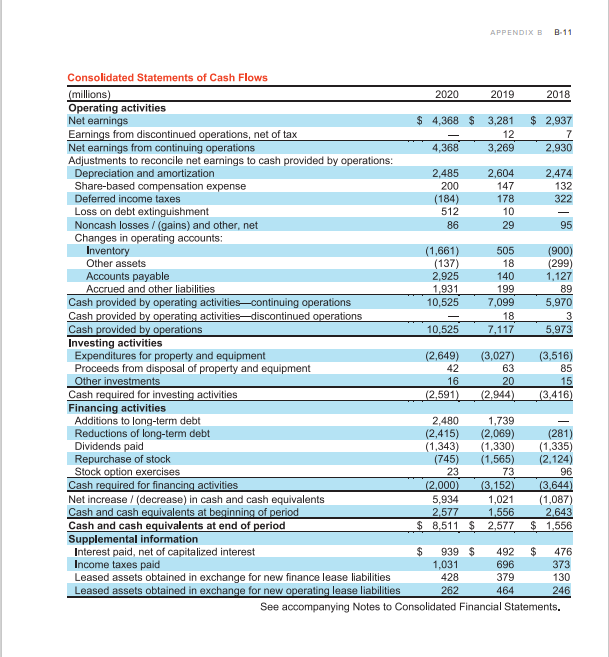
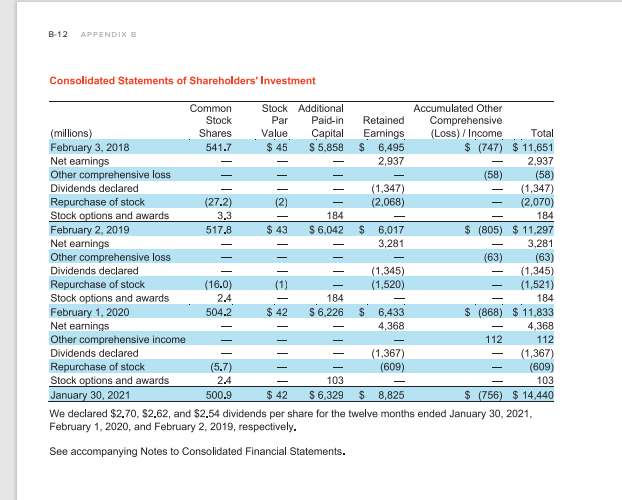

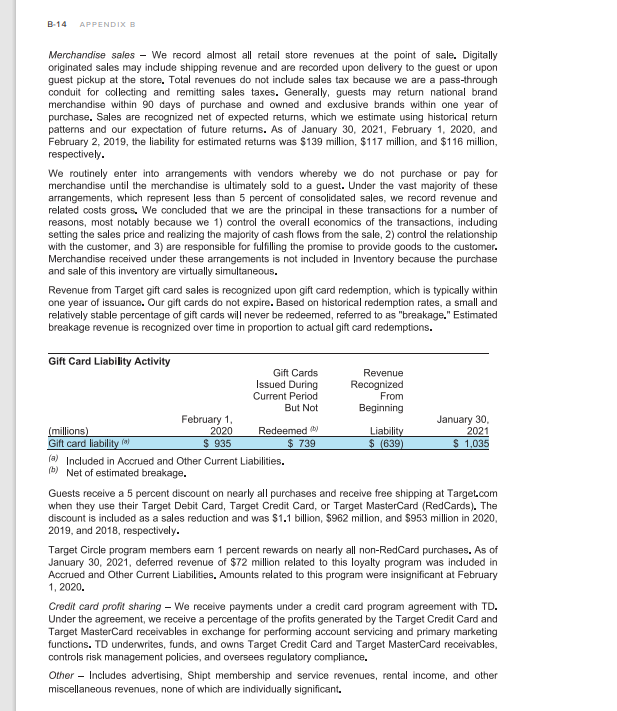
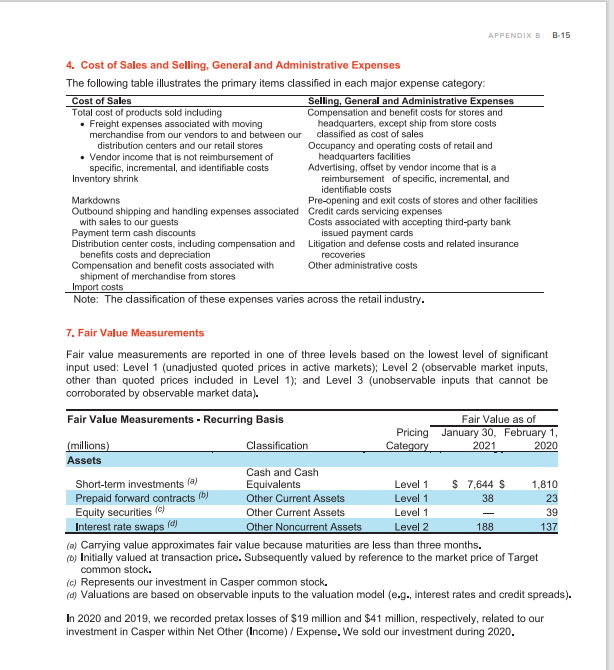
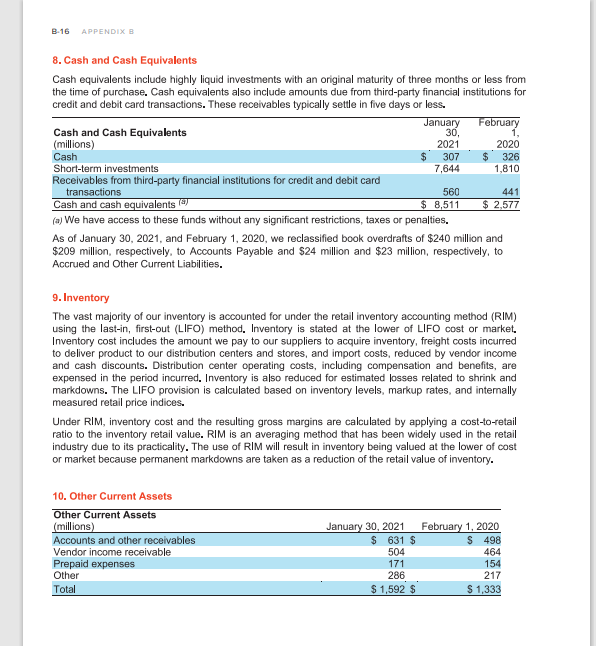
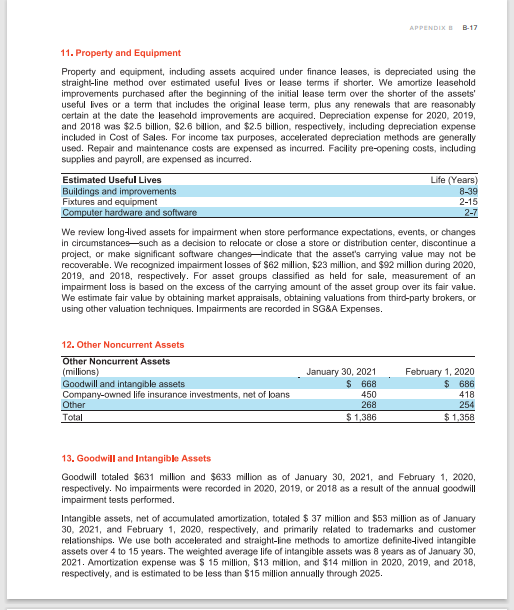
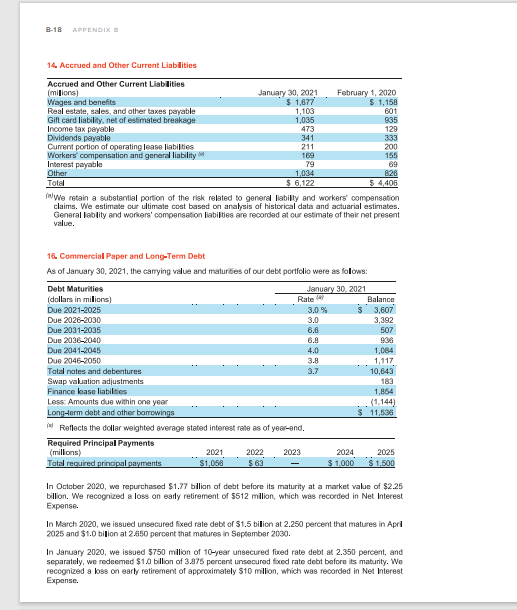 Required: 1. What is the title used by Target for its balance sheets? 2. On the balance sheets, what is the most recent fiscal year reported? 3. What amount does the company report for inventory at the end of the most recent year? 4. Which of the following is not a component of property and equipment? 5. What is the current ratio for the most recent fiscal year and what does this suggest about the compa Complete this question by entering your answers in the tabs below. What amount does the company report for inventory at the end of the most recent year? $10,653, which represents the expected selling price for the inventory $8,992, which represents the expected selling price for the inventory $10,653, which represents the cost of the inventory $10,653, which represents the expected selling price for the inventory Consolidated Statements of Operations Note: rer snare amounts may not toot due to rounding. See accompanying Notes to Consolidated Financial Statements. Consolidated Statements of Comprehensive Income See accompanying Notes to Consolidated Financial Statements. Consolidated Statements of Financial Position outstanding as of January 30,2021;504,198,962 shares issued and outstanding as of February 1 , 2020 . Preferred Stock Authorized 5,000,000 shares, $0.01 par value; no shares were issued or outstanding during any period presented. See accompanying Notes to Consolidated Financial Statements. APPENDIX B B-11 Consolidated Statements of Cash Flows \begin{tabular}{|c|c|c|c|c|c|} \hline (millions) & & 2020 & & 2019 & 2018 \\ \hline \multicolumn{6}{|l|}{ Operating activities } \\ \hline Net earnings & $ & 4,368 & $ & 3,281 & $2,937 \\ \hline Eamings from discontinued operations, net of tax & & - & & 12 & 7 \\ \hline Net earnings from continuing operations & & 4,368 & & 3,269 & 2,930 \\ \hline \multicolumn{6}{|l|}{ Adjustments to reconcile net earnings to cash provided by operations: } \\ \hline Depreciation and amortization & & 2,485 & & 2,604 & 2,474 \\ \hline Share-based compensation expense & & 200 & & 147 & 132 \\ \hline Deferred income taxes & & (184) & & 178 & 322 \\ \hline Loss on debt extinguishment & & 512 & & 10 & \\ \hline Noncash losses / (gains) and other, net & & 86 & & 29 & 95 \\ \hline \multicolumn{6}{|l|}{ Changes in operating accounts: } \\ \hline Inventory & & (1,661) & & 505 & (900) \\ \hline Other assets & & (137) & & 18 & (299) \\ \hline Accounts payable & & 2,925 & & 140 & 1,127 \\ \hline Accrued and other liabilities & & 1,931 & & 199 & 89 \\ \hline Cash provided by operating activities_continuing operations & & 10,525 & & 7,099 & 5,970 \\ \hline Cash provided by operating activities-discontinued operations & & & & 18 & 3 \\ \hline Cash provided by operations & & 10,525 & & 7,117 & 5,973 \\ \hline \multicolumn{6}{|l|}{ Investing activities } \\ \hline Expenditures for property and equipment & & (2,649) & & (3,027) & (3,516) \\ \hline Proceeds from disposal of property and equipment & & 42 & & 63 & 85 \\ \hline Other investments & & 16 & & 20 & 15 \\ \hline Cash required for investing activities & & (2,591) & & (2,944) & (3,416) \\ \hline \multicolumn{6}{|l|}{ Financing activities } \\ \hline Additions to long-term debt & & 2,480 & & 1,739 & - \\ \hline Reductions of long-term debt & & (2,415) & & (2,069) & (281) \\ \hline Dividends paid & & (1,343) & & (1,330) & (1,335) \\ \hline Repurchase of stock & & (745) & & (1,565) & (2,124) \\ \hline Stock option exercises & & 23 & & 73 & 96 \\ \hline Cash required for financing activities & & (2,000) & & (3,152) & (3.644) \\ \hline Net increase / (decrease) in cash and cash equivalents & & 5,934 & & 1,021 & (1,087) \\ \hline Cash and cash equivalents at beginning of period & & 2,577 & & 1,556 & 2,643 \\ \hline Cash and cash equivalents at end of period & $ & 8,511 & $ & 2,577 & $1,556 \\ \hline \multicolumn{6}{|l|}{ Supplemental information } \\ \hline Interest paid, net of capitalized interest & $ & 939 & $ & 492 & 476 \\ \hline Income taxes paid & & 1,031 & & 696 & 373 \\ \hline Leased assets obtained in exchange for ne & & 428 & & 379 & 130 \\ \hline Leased assets obtained in exchange for new operating lease liabilities & & 262 & & 464 & 246 \\ \hline \end{tabular} See accompanying Notes to Consolidated Financial Statements. Consolidated Statements of Shareholders' Investment February 1, 2020, and February 2, 2019, respectively. See accompanying Notes to Consolidated Financial Statements. Notes to Consolidated Financial Statements 1. Summary of Accounting Policies Organization We are a general merchandise retailer selling products to our guests through our stores and digital channels. We operate as a single segment that includes all of our continuing operations, which are designed to enable guests to purchase products seamlessly in stores or through our digital channels. Nearly all of our revenues are generated in the United States (U.S.). The vast majority of our long-lived assets are located within the U.S. Consolidation The consolidated financial statements include the balances of Target and its subsidiaries after elimination of intercompany balances and transactions. All material subsidiaries are wholly owned. We consolidate variable interest entities where it has been determined that Target is the primary beneficiary of those entities' operations. Use of estimates The preparation of our consolidated financial statements in conformity with U.S. generally accepted accounting principles (GAAP) requires management to make estimates and assumptions affecting reported amounts in the consolidated financial statements and accompanying notes. Actual results may differ significantly from those estimates. Fiscal year Our fiscal year ends on the Saturday nearest January 31. Unless otherwise stated, references to years in this report relate to fiscal years, rather than to calendar years. Fiscal 2020, 2019 and 2018 ended January 30, 2021, February 1, 2020, and February 2, 2019, respectively, and consisted of 52 weeks. Fiscal 2021 will end January 29, 2022, and will consist of 52 weeks. Accounting policies Our accounting policies are disclosed in the applicable Notes to the Consolidated Financial Statements. Certain prior-year amounts have been reclassified to conform to the current-year presentation. 3. Revenues General merchandise sales represent the vast majority of our revenues. We also earn revenues from a variety of other sources, most notably credit card profit-sharing income from our arrangement with TD Bank. Group (TD). (a) Includes apparel for women, men, boys, girs, toddlers, infants and newboms, as well as jewelry, accessories, and shoes. (b) Indudes beauty and personal care, baby gear, cleaning, paper products, and pet supplies. (c) Includes dry grocery, dairy, frozen food, beverages, candy, snecks, deli, bakery, meat, produce, and food service in our stores. (d) Includes electronics (including video game hardware and software), toys, entertainment, sporting goods, and luggage. (e) Includes fumiture, lighting, storage, kitchenware, small appliances, home dcor, bed and bath, home improvement, schoollofice supplies, greeting cards and party supplies, and other seasonal merchandise. Merchandise sales - We record almost all retail store revenues at the point of sale. Digitally originated sales may include shipping revenue and are recorded upon delivery to the guest or upon guest pickup at the store. Total revenues do not include sales tax because we are a pass-through conduit for collecting and remitting sales taxes. Generally, guests may return national brand merchandise within 90 days of purchase and owned and exclusive brands within one year of purchase. Sales are recognized net of expected returns, which we estimate using historical return patterns and our expectation of future returns. As of January 30, 2021, February 1, 2020, and February 2, 2019, the liability for estimated returns was \$139 million, \$117 million, and \$116 million, respectively. We routinely enter into arrangements with vendors whereby we do not purchase or pay for merchandise until the merchandise is ultimately sold to a guest. Under the vast majority of these arrangements, which represent less than 5 percent of consolidated sales, we record revenue and related costs gross. We concluded that we are the principal in these transactions for a number of reasons, most notably because we 1) control the overall economics of the transactions, including setting the sales price and realizing the majority of cash flows from the sale, 2) control the relationship with the customer, and 3) are responsible for fulfilling the promise to provide goods to the customer. Merchandise received under these arrangements is not included in Inventory because the purchase and sale of this inventory are virtually simultaneous. Revenue from Target gift card sales is recognized upon gift card redemption, which is typically within one year of issuance. Our gift cards do not expire. Based on historical redemption rates, a small and relatively stable percentage of gift cards will never be redeemed, referred to as "breakage." Estimated breakage revenue is recognized over time in proportion to actual gift card redemptions. (a) Included in Accrued and Other Current Liabilities. (b) Net of estimated breakage. Guests receive a 5 percent discount on nearly all purchases and receive free shipping at Target.com when they use their Target Debit Card, Target Credit Card, or Target MasterCard (RedCards). The discount is included as a sales reduction and was $1.1 billion, $962 million, and $953 million in 2020 , 2019, and 2018, respectively. Target Circle program members earn 1 percent rewards on nearly all non-RedCard purchases. As of January 30, 2021, deferred revenue of $72 million related to this loyalty program was included in Accrued and Other Current Liabilities. Amounts related to this program were insignificant at February 1,2020. Credit card profit sharing - We receive payments under a credit card program agreement with TD. Under the agreement, we receive a percentage of the profits generated by the Target Credit Card and Target MasterCard receivables in exchange for performing account servicing and primary marketing functions. TD underwrites, funds, and owns Target Credit Card and Target MasterCard receivables, controls risk management policies, and oversees regulatory compliance. Other - Includes advertising. Shipt membership and service revenues, rental income, and other miscellaneous revenues, none of which are individually significant. 4. Cost of Sales and Selling, General and Administrative Expenses The following table illustrates the primary items classified in each major expense category: 7. Fair Value Measurements Fair value measurements are reported in one of three levels based on the lowest level of significant input used: Level 1 (unadjusted quoted prices in active markets); Level 2 (observable market inputs, other than quoted prices included in Level 1); and Level 3 (unobservable inputs that cannot be corroborated by observable market data). (a) Carrying value approximates fair value because maturities are less than three months. (b) Initially valued at transaction price. Subsequently valued by reference to the market price of Target common stock. (c) Represents our investment in Casper common stock. (d) Valuations are based on observable inputs to the valuation model (e.g., interest rates and credit spreads). In 2020 and 2019, we recorded pretax losses of $19 million and $41 million, respectively, related to our investment in Casper within Net Other (Income) / Expense. We sold our investment during 2020. 8. Cash and Cash Equivalents Cash equivalents include highly liquid investments with an original maturity of three months or less from the time of purchase. Cash equivalents also include amounts due from third-party financial institutions for credit and debit card transactions. These receivables typically settle in five days or less. (a) We have access to these funds without any significant restrictions, taxes or penalties. As of January 30, 2021, and February 1,2020, we reclassified book overdrafts of $240 million and $209 million, respectively, to Accounts Payable and \$24 million and \$23 million, respectively, to Accrued and Other Current Liabilities. 9. Inventory The vast majority of our inventory is accounted for under the retail inventory accounting method (RIM) using the last-in, first-out (LIFO) method. Inventory is stated at the lower of LIFO cost or market. Inventory cost includes the amount we pay to our suppliers to acquire inventory, freight costs incurred to deliver product to our distribution centers and stores, and import costs, reduced by vendor income and cash discounts. Distribution center operating costs, including compensation and benefits, are expensed in the period incurred. Inventory is also reduced for estimated losses related to shrink and markdowns. The LIFO provision is calculated based on inventory levels, markup rates, and internally measured retail price indices. Under RIM, inventory cost and the resulting gross margins are calculated by applying a cost-to-retail ratio to the inventory retail value. RIM is an averaging method that has been widely used in the retail industry due to its practicality. The use of RIM will result in inventory being valued at the lower of cost or market because permanent markdowns are taken as a reduction of the retail value of inventory. 11. Property and Equipment Property and equipment, including assets acquired under finance leases, is depreciated using the straight-line method over estimated useful fives or lease terms if shorter. We amortize leasehold improvements purchased after the beginning of the initial lease term over the shorter of the assets' useful Fives or a term that includes the original lease term, plus any renewals that are reasonably certain at the date the leasehold improvements are acquired. Depreciation expense for 2020, 2019, and 2018 was $2.5 billion, $2.6 billion, and $2.5 billion, respectively, including depreciation expense included in Cost of Sales. For income tax purposes, accelerated depreciation methods are generally used. Repair and maintenance costs are expensed as incurred. Facility pre-opening costs, including supplies and payroll, are expensed as incurred. We review long-lived assets for impairment when store performance expectations, events, or changes in circumstances-such as a decision to relocate or close a store or distribution center, discontinue a project, or make significant software changes-indicate that the asset's carrying value may not be recoverable. We recognized impairment losses of $62 million, \$23 million, and $92 million during 2020, 2019, and 2018, respectively. For asset groups classified as held for sale, measurement of an impairment loss is based on the excess of the carrying amount of the asset group over its fair value. We estimate fair value by obtaining market appraisals, obtaining valuations from third-party brokers, or using other valuation techniques. Impairments are recorded in SG\&A Expenses. 12 Nther Ninnurrent Decote 13. Goodwill and Intangible Assets Goodwill totaled $631 million and $633 million as of January 30, 2021, and February 1, 2020 , respectively. No impairments were recorded in 2020, 2019, or 2018 as a result of the annual goodwill impairment tests performed. Intangible assets, net of accumulated amortization, totaled \$ 37 million and \$53 million as of January 30, 2021, and February 1, 2020, respectively, and primarily related to trademarks and customer relationships. We use both accelerated and straight-line methods to amortize definite-fived intangible assets over 4 to 15 years. The weighted average life of intangible assets was 8 years as of January 30 , 2021. Amortization expense was \$ 15 million, \$13 million, and \$14 million in 2020, 2019, and 2018, respectively, and is estimated to be less than $15 million annually through 2025 . 14. Accrued and Other Current Liablities ial We retain a substantial portion of the risk related to genera liabilty and workers' compensation claims. We estimate our ultimate cost based on analysis of historical data and actuarial estimates. General leblity and workers' compenselion liabilties are reconded at our estimate of their net present value. 16. Commercial Paper and Long-Term Debt As of January 30, 2021, the carrying value and maturifies of our debt portfolio were as folows: In October 2020, we repurchased $1.77 bllian of debt before its maturity at a market value of $2.25 billion. We recogrized a loss on estly retirement of $512 million, which was recorded in Net Interest Expanse. In March 2020, we issued unsecured fixed rate debt of $1.5 bilion at 2.250 percent that matures in Apri 2025 and $1.0 bilion at 2.650 percent that matures in September 2030. In January 2020, we issued $750 million of 10-year unsecured fued rate debt at 2.350 percent, and separately, we redecmed $1.0 bilion of 3.875 percent unsecured fored rate debt before its maturity. Wn: recognized a bass on eafly retirement of approximately $10 milion, which was recorded in Net Interest Expense
Required: 1. What is the title used by Target for its balance sheets? 2. On the balance sheets, what is the most recent fiscal year reported? 3. What amount does the company report for inventory at the end of the most recent year? 4. Which of the following is not a component of property and equipment? 5. What is the current ratio for the most recent fiscal year and what does this suggest about the compa Complete this question by entering your answers in the tabs below. What amount does the company report for inventory at the end of the most recent year? $10,653, which represents the expected selling price for the inventory $8,992, which represents the expected selling price for the inventory $10,653, which represents the cost of the inventory $10,653, which represents the expected selling price for the inventory Consolidated Statements of Operations Note: rer snare amounts may not toot due to rounding. See accompanying Notes to Consolidated Financial Statements. Consolidated Statements of Comprehensive Income See accompanying Notes to Consolidated Financial Statements. Consolidated Statements of Financial Position outstanding as of January 30,2021;504,198,962 shares issued and outstanding as of February 1 , 2020 . Preferred Stock Authorized 5,000,000 shares, $0.01 par value; no shares were issued or outstanding during any period presented. See accompanying Notes to Consolidated Financial Statements. APPENDIX B B-11 Consolidated Statements of Cash Flows \begin{tabular}{|c|c|c|c|c|c|} \hline (millions) & & 2020 & & 2019 & 2018 \\ \hline \multicolumn{6}{|l|}{ Operating activities } \\ \hline Net earnings & $ & 4,368 & $ & 3,281 & $2,937 \\ \hline Eamings from discontinued operations, net of tax & & - & & 12 & 7 \\ \hline Net earnings from continuing operations & & 4,368 & & 3,269 & 2,930 \\ \hline \multicolumn{6}{|l|}{ Adjustments to reconcile net earnings to cash provided by operations: } \\ \hline Depreciation and amortization & & 2,485 & & 2,604 & 2,474 \\ \hline Share-based compensation expense & & 200 & & 147 & 132 \\ \hline Deferred income taxes & & (184) & & 178 & 322 \\ \hline Loss on debt extinguishment & & 512 & & 10 & \\ \hline Noncash losses / (gains) and other, net & & 86 & & 29 & 95 \\ \hline \multicolumn{6}{|l|}{ Changes in operating accounts: } \\ \hline Inventory & & (1,661) & & 505 & (900) \\ \hline Other assets & & (137) & & 18 & (299) \\ \hline Accounts payable & & 2,925 & & 140 & 1,127 \\ \hline Accrued and other liabilities & & 1,931 & & 199 & 89 \\ \hline Cash provided by operating activities_continuing operations & & 10,525 & & 7,099 & 5,970 \\ \hline Cash provided by operating activities-discontinued operations & & & & 18 & 3 \\ \hline Cash provided by operations & & 10,525 & & 7,117 & 5,973 \\ \hline \multicolumn{6}{|l|}{ Investing activities } \\ \hline Expenditures for property and equipment & & (2,649) & & (3,027) & (3,516) \\ \hline Proceeds from disposal of property and equipment & & 42 & & 63 & 85 \\ \hline Other investments & & 16 & & 20 & 15 \\ \hline Cash required for investing activities & & (2,591) & & (2,944) & (3,416) \\ \hline \multicolumn{6}{|l|}{ Financing activities } \\ \hline Additions to long-term debt & & 2,480 & & 1,739 & - \\ \hline Reductions of long-term debt & & (2,415) & & (2,069) & (281) \\ \hline Dividends paid & & (1,343) & & (1,330) & (1,335) \\ \hline Repurchase of stock & & (745) & & (1,565) & (2,124) \\ \hline Stock option exercises & & 23 & & 73 & 96 \\ \hline Cash required for financing activities & & (2,000) & & (3,152) & (3.644) \\ \hline Net increase / (decrease) in cash and cash equivalents & & 5,934 & & 1,021 & (1,087) \\ \hline Cash and cash equivalents at beginning of period & & 2,577 & & 1,556 & 2,643 \\ \hline Cash and cash equivalents at end of period & $ & 8,511 & $ & 2,577 & $1,556 \\ \hline \multicolumn{6}{|l|}{ Supplemental information } \\ \hline Interest paid, net of capitalized interest & $ & 939 & $ & 492 & 476 \\ \hline Income taxes paid & & 1,031 & & 696 & 373 \\ \hline Leased assets obtained in exchange for ne & & 428 & & 379 & 130 \\ \hline Leased assets obtained in exchange for new operating lease liabilities & & 262 & & 464 & 246 \\ \hline \end{tabular} See accompanying Notes to Consolidated Financial Statements. Consolidated Statements of Shareholders' Investment February 1, 2020, and February 2, 2019, respectively. See accompanying Notes to Consolidated Financial Statements. Notes to Consolidated Financial Statements 1. Summary of Accounting Policies Organization We are a general merchandise retailer selling products to our guests through our stores and digital channels. We operate as a single segment that includes all of our continuing operations, which are designed to enable guests to purchase products seamlessly in stores or through our digital channels. Nearly all of our revenues are generated in the United States (U.S.). The vast majority of our long-lived assets are located within the U.S. Consolidation The consolidated financial statements include the balances of Target and its subsidiaries after elimination of intercompany balances and transactions. All material subsidiaries are wholly owned. We consolidate variable interest entities where it has been determined that Target is the primary beneficiary of those entities' operations. Use of estimates The preparation of our consolidated financial statements in conformity with U.S. generally accepted accounting principles (GAAP) requires management to make estimates and assumptions affecting reported amounts in the consolidated financial statements and accompanying notes. Actual results may differ significantly from those estimates. Fiscal year Our fiscal year ends on the Saturday nearest January 31. Unless otherwise stated, references to years in this report relate to fiscal years, rather than to calendar years. Fiscal 2020, 2019 and 2018 ended January 30, 2021, February 1, 2020, and February 2, 2019, respectively, and consisted of 52 weeks. Fiscal 2021 will end January 29, 2022, and will consist of 52 weeks. Accounting policies Our accounting policies are disclosed in the applicable Notes to the Consolidated Financial Statements. Certain prior-year amounts have been reclassified to conform to the current-year presentation. 3. Revenues General merchandise sales represent the vast majority of our revenues. We also earn revenues from a variety of other sources, most notably credit card profit-sharing income from our arrangement with TD Bank. Group (TD). (a) Includes apparel for women, men, boys, girs, toddlers, infants and newboms, as well as jewelry, accessories, and shoes. (b) Indudes beauty and personal care, baby gear, cleaning, paper products, and pet supplies. (c) Includes dry grocery, dairy, frozen food, beverages, candy, snecks, deli, bakery, meat, produce, and food service in our stores. (d) Includes electronics (including video game hardware and software), toys, entertainment, sporting goods, and luggage. (e) Includes fumiture, lighting, storage, kitchenware, small appliances, home dcor, bed and bath, home improvement, schoollofice supplies, greeting cards and party supplies, and other seasonal merchandise. Merchandise sales - We record almost all retail store revenues at the point of sale. Digitally originated sales may include shipping revenue and are recorded upon delivery to the guest or upon guest pickup at the store. Total revenues do not include sales tax because we are a pass-through conduit for collecting and remitting sales taxes. Generally, guests may return national brand merchandise within 90 days of purchase and owned and exclusive brands within one year of purchase. Sales are recognized net of expected returns, which we estimate using historical return patterns and our expectation of future returns. As of January 30, 2021, February 1, 2020, and February 2, 2019, the liability for estimated returns was \$139 million, \$117 million, and \$116 million, respectively. We routinely enter into arrangements with vendors whereby we do not purchase or pay for merchandise until the merchandise is ultimately sold to a guest. Under the vast majority of these arrangements, which represent less than 5 percent of consolidated sales, we record revenue and related costs gross. We concluded that we are the principal in these transactions for a number of reasons, most notably because we 1) control the overall economics of the transactions, including setting the sales price and realizing the majority of cash flows from the sale, 2) control the relationship with the customer, and 3) are responsible for fulfilling the promise to provide goods to the customer. Merchandise received under these arrangements is not included in Inventory because the purchase and sale of this inventory are virtually simultaneous. Revenue from Target gift card sales is recognized upon gift card redemption, which is typically within one year of issuance. Our gift cards do not expire. Based on historical redemption rates, a small and relatively stable percentage of gift cards will never be redeemed, referred to as "breakage." Estimated breakage revenue is recognized over time in proportion to actual gift card redemptions. (a) Included in Accrued and Other Current Liabilities. (b) Net of estimated breakage. Guests receive a 5 percent discount on nearly all purchases and receive free shipping at Target.com when they use their Target Debit Card, Target Credit Card, or Target MasterCard (RedCards). The discount is included as a sales reduction and was $1.1 billion, $962 million, and $953 million in 2020 , 2019, and 2018, respectively. Target Circle program members earn 1 percent rewards on nearly all non-RedCard purchases. As of January 30, 2021, deferred revenue of $72 million related to this loyalty program was included in Accrued and Other Current Liabilities. Amounts related to this program were insignificant at February 1,2020. Credit card profit sharing - We receive payments under a credit card program agreement with TD. Under the agreement, we receive a percentage of the profits generated by the Target Credit Card and Target MasterCard receivables in exchange for performing account servicing and primary marketing functions. TD underwrites, funds, and owns Target Credit Card and Target MasterCard receivables, controls risk management policies, and oversees regulatory compliance. Other - Includes advertising. Shipt membership and service revenues, rental income, and other miscellaneous revenues, none of which are individually significant. 4. Cost of Sales and Selling, General and Administrative Expenses The following table illustrates the primary items classified in each major expense category: 7. Fair Value Measurements Fair value measurements are reported in one of three levels based on the lowest level of significant input used: Level 1 (unadjusted quoted prices in active markets); Level 2 (observable market inputs, other than quoted prices included in Level 1); and Level 3 (unobservable inputs that cannot be corroborated by observable market data). (a) Carrying value approximates fair value because maturities are less than three months. (b) Initially valued at transaction price. Subsequently valued by reference to the market price of Target common stock. (c) Represents our investment in Casper common stock. (d) Valuations are based on observable inputs to the valuation model (e.g., interest rates and credit spreads). In 2020 and 2019, we recorded pretax losses of $19 million and $41 million, respectively, related to our investment in Casper within Net Other (Income) / Expense. We sold our investment during 2020. 8. Cash and Cash Equivalents Cash equivalents include highly liquid investments with an original maturity of three months or less from the time of purchase. Cash equivalents also include amounts due from third-party financial institutions for credit and debit card transactions. These receivables typically settle in five days or less. (a) We have access to these funds without any significant restrictions, taxes or penalties. As of January 30, 2021, and February 1,2020, we reclassified book overdrafts of $240 million and $209 million, respectively, to Accounts Payable and \$24 million and \$23 million, respectively, to Accrued and Other Current Liabilities. 9. Inventory The vast majority of our inventory is accounted for under the retail inventory accounting method (RIM) using the last-in, first-out (LIFO) method. Inventory is stated at the lower of LIFO cost or market. Inventory cost includes the amount we pay to our suppliers to acquire inventory, freight costs incurred to deliver product to our distribution centers and stores, and import costs, reduced by vendor income and cash discounts. Distribution center operating costs, including compensation and benefits, are expensed in the period incurred. Inventory is also reduced for estimated losses related to shrink and markdowns. The LIFO provision is calculated based on inventory levels, markup rates, and internally measured retail price indices. Under RIM, inventory cost and the resulting gross margins are calculated by applying a cost-to-retail ratio to the inventory retail value. RIM is an averaging method that has been widely used in the retail industry due to its practicality. The use of RIM will result in inventory being valued at the lower of cost or market because permanent markdowns are taken as a reduction of the retail value of inventory. 11. Property and Equipment Property and equipment, including assets acquired under finance leases, is depreciated using the straight-line method over estimated useful fives or lease terms if shorter. We amortize leasehold improvements purchased after the beginning of the initial lease term over the shorter of the assets' useful Fives or a term that includes the original lease term, plus any renewals that are reasonably certain at the date the leasehold improvements are acquired. Depreciation expense for 2020, 2019, and 2018 was $2.5 billion, $2.6 billion, and $2.5 billion, respectively, including depreciation expense included in Cost of Sales. For income tax purposes, accelerated depreciation methods are generally used. Repair and maintenance costs are expensed as incurred. Facility pre-opening costs, including supplies and payroll, are expensed as incurred. We review long-lived assets for impairment when store performance expectations, events, or changes in circumstances-such as a decision to relocate or close a store or distribution center, discontinue a project, or make significant software changes-indicate that the asset's carrying value may not be recoverable. We recognized impairment losses of $62 million, \$23 million, and $92 million during 2020, 2019, and 2018, respectively. For asset groups classified as held for sale, measurement of an impairment loss is based on the excess of the carrying amount of the asset group over its fair value. We estimate fair value by obtaining market appraisals, obtaining valuations from third-party brokers, or using other valuation techniques. Impairments are recorded in SG\&A Expenses. 12 Nther Ninnurrent Decote 13. Goodwill and Intangible Assets Goodwill totaled $631 million and $633 million as of January 30, 2021, and February 1, 2020 , respectively. No impairments were recorded in 2020, 2019, or 2018 as a result of the annual goodwill impairment tests performed. Intangible assets, net of accumulated amortization, totaled \$ 37 million and \$53 million as of January 30, 2021, and February 1, 2020, respectively, and primarily related to trademarks and customer relationships. We use both accelerated and straight-line methods to amortize definite-fived intangible assets over 4 to 15 years. The weighted average life of intangible assets was 8 years as of January 30 , 2021. Amortization expense was \$ 15 million, \$13 million, and \$14 million in 2020, 2019, and 2018, respectively, and is estimated to be less than $15 million annually through 2025 . 14. Accrued and Other Current Liablities ial We retain a substantial portion of the risk related to genera liabilty and workers' compensation claims. We estimate our ultimate cost based on analysis of historical data and actuarial estimates. General leblity and workers' compenselion liabilties are reconded at our estimate of their net present value. 16. Commercial Paper and Long-Term Debt As of January 30, 2021, the carrying value and maturifies of our debt portfolio were as folows: In October 2020, we repurchased $1.77 bllian of debt before its maturity at a market value of $2.25 billion. We recogrized a loss on estly retirement of $512 million, which was recorded in Net Interest Expanse. In March 2020, we issued unsecured fixed rate debt of $1.5 bilion at 2.250 percent that matures in Apri 2025 and $1.0 bilion at 2.650 percent that matures in September 2030. In January 2020, we issued $750 million of 10-year unsecured fued rate debt at 2.350 percent, and separately, we redecmed $1.0 bilion of 3.875 percent unsecured fored rate debt before its maturity. Wn: recognized a bass on eafly retirement of approximately $10 milion, which was recorded in Net Interest Expense Step by Step Solution
There are 3 Steps involved in it
Step: 1

Get Instant Access to Expert-Tailored Solutions
See step-by-step solutions with expert insights and AI powered tools for academic success
Step: 2

Step: 3

Ace Your Homework with AI
Get the answers you need in no time with our AI-driven, step-by-step assistance
Get Started


